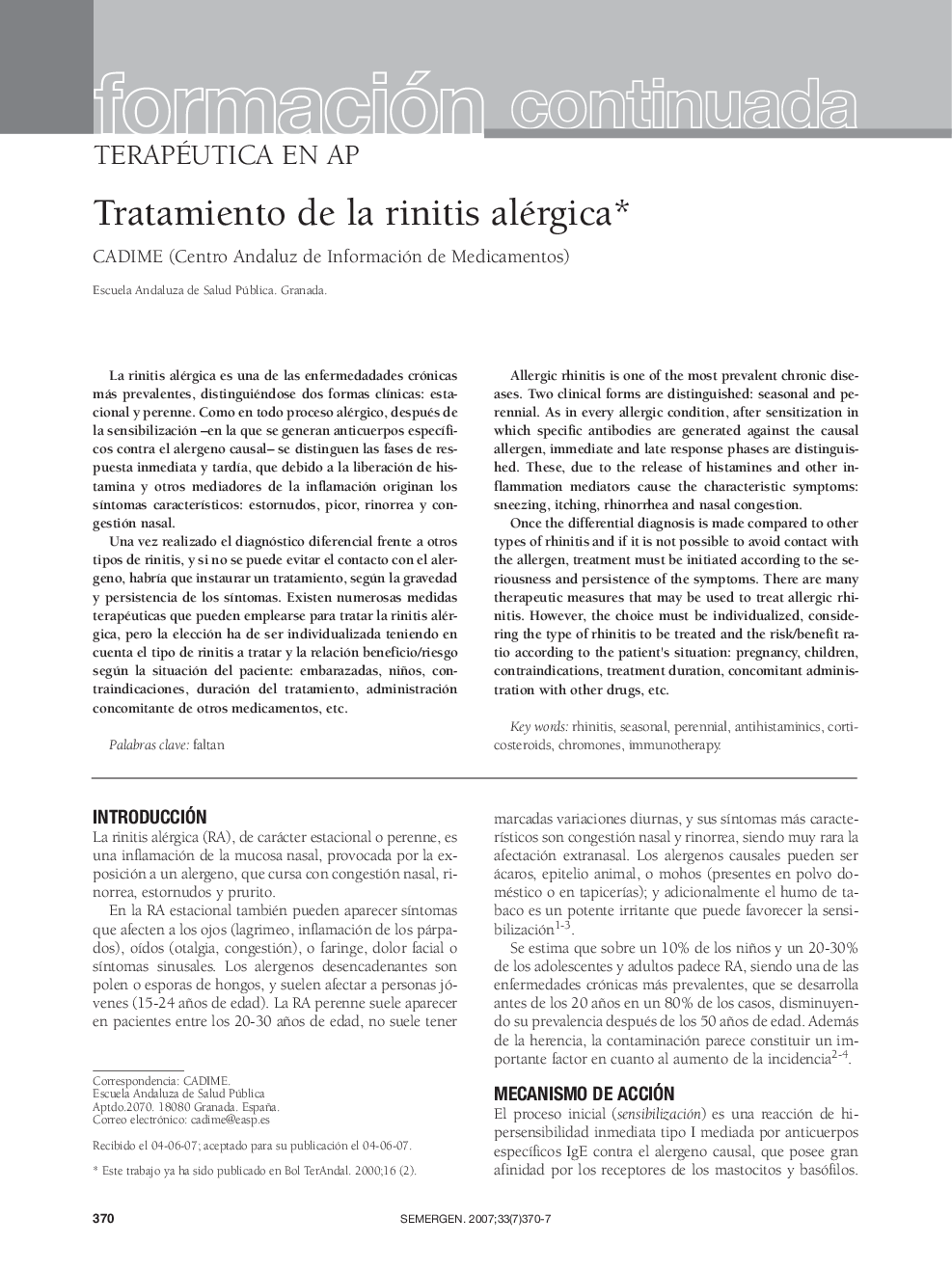| Article ID | Journal | Published Year | Pages | File Type |
|---|---|---|---|---|
| 3835884 | SEMERGEN - Medicina de Familia | 2007 | 8 Pages |
La rinitis alérgica es una de las enfermedadades crónicas más prevalentes, distinguiéndose dos formas clÃnicas: estacional y perenne. Como en todo proceso alérgico, después de la sensibilización -en la que se generan anticuerpos especÃficos contra el alergeno causal- se distinguen las fases de respuesta inmediata y tardÃa, que debido a la liberación de histamina y otros mediadores de la inflamación originan los sÃntomas caracterÃsticos: estornudos, picor, rinorrea y congestion nasal.Una vez realizado el diagnóstico diferencial frente a otros tipos de rinitis, y si no se puede evitar el contacto con el alergeno, habrÃa que instaurar un ratamiento, según la gravedad y persistencia de los sÃntomas. Existen numerosas medidas terapéuticas que pueden emplearse para tratar la rinitis alérgica, pero la elección ha de ser individualizada teniendo en cuenta el tipo de rinitis a tratar y la relación beneficio/riesgo según la situación del paciente: embarazadas, niños, contraindicaciones, duración del tratamiento, administración concomitante de otros medicamentos, etc.
Allergic rhinitis is one of the most prevalent chronic diseases. Two clinical forms are distinguished: seasonal and perennial. As in every allergic condition, after sensitization in which specific antibodies are generated against the causal allergen, immediate and late response phases are distinguished. These, due to the release of histamines and other inflammation mediators cause the characteristic symptoms: sneezing, itching, rhinorrhea and nasal congestion.Once the differential diagnosis is made compared to other types of rhinitis and if it is not possible to avoid contact with the allergen, treatment must be initiated according to the seriousness and persistence of the symptoms. There are many therapeutic measures that may be used to treat allergic rhinitis. However, the choice must be individualized, considering the type of rhinitis to be treated and the risk/benefit ratio according to the patient's situation: pregnancy, children, contraindications, treatment duration, concomitant administration with other drugs, etc.
